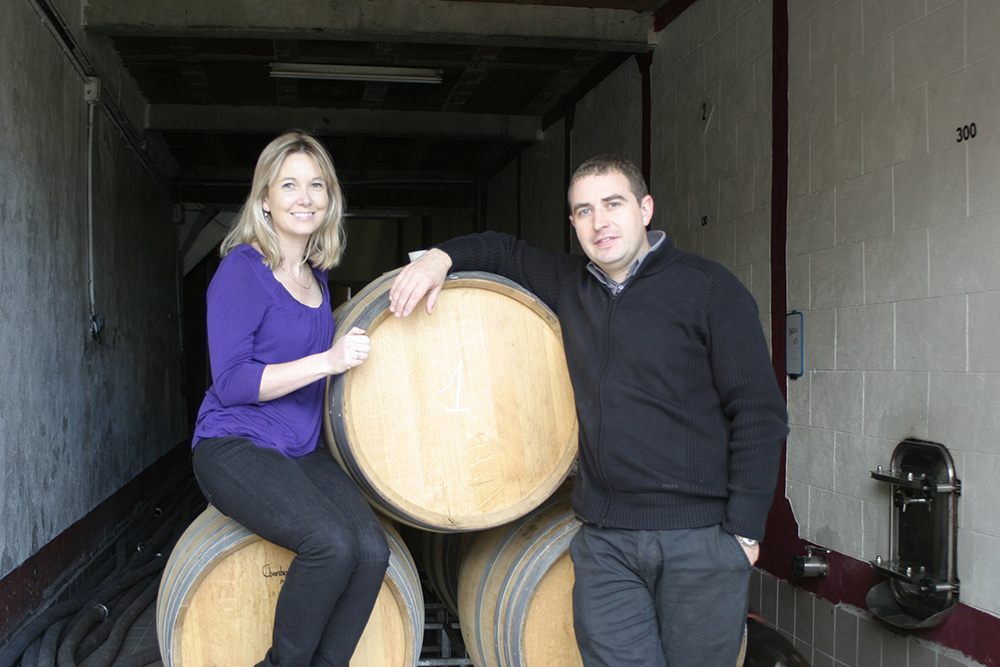An Irish Chef in France
%20LR.jpg) When we bought our Chambre d’Hote in the Languedoc in 2006 we very quickly became aware that the dominant use of the land here was to cultivate the grape and the outstanding product of the area was wine.
When we bought our Chambre d’Hote in the Languedoc in 2006 we very quickly became aware that the dominant use of the land here was to cultivate the grape and the outstanding product of the area was wine.
One of the very few vineyards in our immediate area, of which we had previously heard, was Cazal Viel. Their wine was starting at that time to be sold in the Irish market and had been taken up by several of the large supermarkets.
Their vineyard, which is within the borders of the St. Chinian appellation, is about 10 km from our village and hidden in a shallow valley of the Garrigue (the rough moorland of the Languedoc).
This area has been planted with vines since the beginning of the thirteenth century, originally by the monks from nearby Fontcaude Abbey and since 1791 by the Miquel family. It is now run by Henri and Laurent Miquel the seventh and eighth generation, respectively, of the family. They now are the largest private producers in the St. Chinian area.
Laurent initially decided not to follow the family wine trade and had qualified as an engineer and was planning to work in Sheffield when he met a young Irish girl, Neasa Corish, from Foxrock in Dublin, who was working as an au pair in the nearby seaside town of Valras Plage. Theirs was a holiday romance which lasted well and six years later, having completed a Physics degree in Trinity College Dublin, Neasa moved out to France to be with him.
 Laurent had, by this time decided to return to work in the family business and had become one of the young wine makers who were taking advantage of the volatility in the wine market of the Languedoc to move in new directions.
Laurent had, by this time decided to return to work in the family business and had become one of the young wine makers who were taking advantage of the volatility in the wine market of the Languedoc to move in new directions.
Languedoc wines were a victim of their own success. They had traditionally cornered the lower end of the market at a time when the French, never happy with the purity of their water, drank wine as a safer option to quench their thirst.
Time had caught up with them in the sixties and seventies. The importing of cheap wines from Australia and the Americas had eaten into their market. Also the French saw that their consumption of wine was not perhaps as healthy as they thought and this resulted in the average annual consumption of wine going, in a very short period of time, from 200 litres to around 40 litres per person.
The traditional wines of the area were strong reds and Laurent and Neasa went out on a limb to introduce white wines into this red dominated area. To this end Laurent planted Viognier grapes in Cazal Viel. This delicate flavoured wine was traditionally grown in Condrieu on the Rhone, an area much wetter than the Languedoc Garrigue that was dried by the by the Tramontane wind which blew down between the Pyrenees to the south and the Montagnes Noirs to the North.
Laurent set up large reservoirs on their land and was able to gather enough water in the winter to keep these vines drip irrigated during the summer.
Pleased with the success of the Viognier the Miquels made a further incursion into the white wine market by planting the Spanish Alberino grapes in another vineyard near Lagrasse. This has also proved a great success.
Neasa told us a story about one of the reasons that she and Laurent were inspired to start afresh and change and modernise their production in Cazal Viel.
After Laurent went back into the family business he met an old student friend whose father was investing heavily in a vineyard in Bordeaux. Laurent suggested he could invest more profitably in the Languedoc.
The man advised him that he would never make wines “with finesse” in the Languedoc. Laurent was determined to prove him wrong.
Wine experts like Jancis Robinson and Andrew Jefford would agree that the Languedoc wines of today have proved Laurent right.
It is pleasing to contemplate that, because these young Vignerons were prepared to change dramatically the direction of their business and move from the old reds that had been their tradition towards modern whites, they are now enjoying the successful fulfilment of their ambitions.
*Martin and Síle Dwyer’s Chambre d’Hôte, Le Presbytère, is closed this season due to Covid-19, but they look forward to welcoming guests again in 2021.
Martin Martin Dwyer started cooking professionally over 40 years ago in the legendary “Snaffles Restaurant” in Dublin. After a time in a Relais Chateau in Anjou and in “The Wife of Bath” in Kent he opened his own acclaimed restaurant, “Dwyers”, in Waterford in 1989. In 2004 he sold this and moved south to France where he and his wife Síle bought and restored an old presbytery in a village in the Languedoc. They now run Le Presbytère as a French style Chambre d’Hôte. Martin however is far too passionate about food to give up cooking so they now enjoy serving dinner to their customers on the terrace of Le Presbytère on warm summer evenings. Martin runs occasional cookery courses in Le Presbytère and Síle’s brother Colm does week long Nature Strolls discovering the Flora and Fauna of the Languedoc.
Le Presbytère can be seen at: www.lepresbytere.net;
email: martin@lepresbytere.net.





There are currently no comments
Leave a comment
Not a member? Register for your free membership now!
Or leave a comment by logging in with: